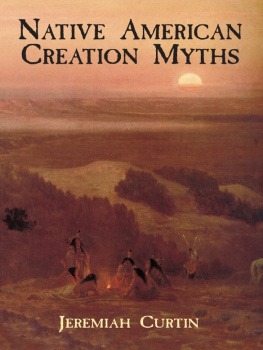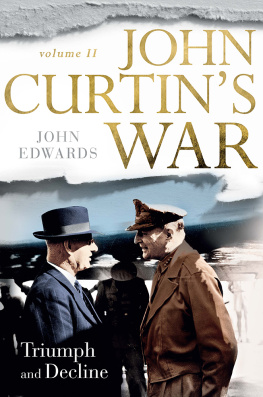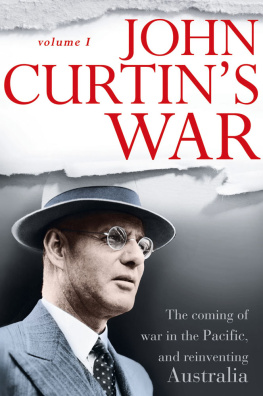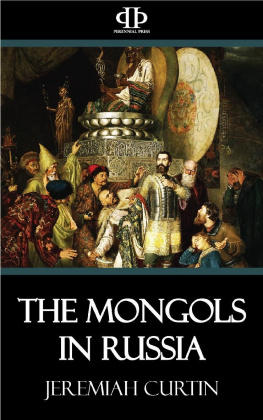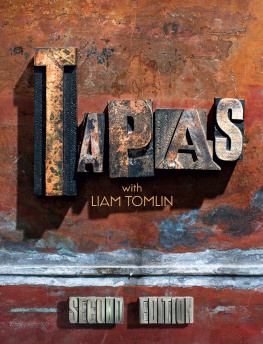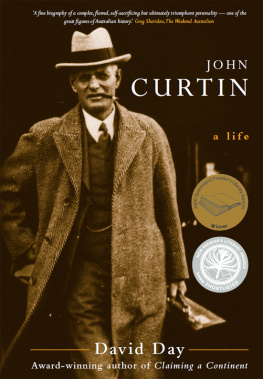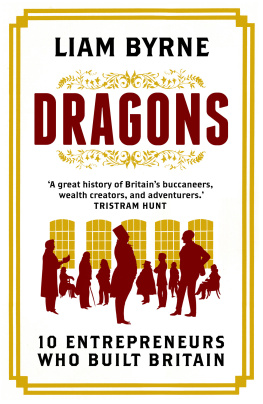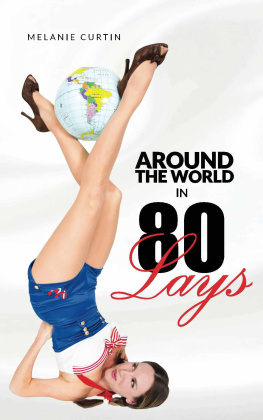Liam Byrne - Becoming John Curtin and James Scullin
Here you can read online Liam Byrne - Becoming John Curtin and James Scullin full text of the book (entire story) in english for free. Download pdf and epub, get meaning, cover and reviews about this ebook. year: 2020, publisher: Melbourne University Publishing, genre: Politics. Description of the work, (preface) as well as reviews are available. Best literature library LitArk.com created for fans of good reading and offers a wide selection of genres:
Romance novel
Science fiction
Adventure
Detective
Science
History
Home and family
Prose
Art
Politics
Computer
Non-fiction
Religion
Business
Children
Humor
Choose a favorite category and find really read worthwhile books. Enjoy immersion in the world of imagination, feel the emotions of the characters or learn something new for yourself, make an fascinating discovery.

- Book:Becoming John Curtin and James Scullin
- Author:
- Publisher:Melbourne University Publishing
- Genre:
- Year:2020
- Rating:5 / 5
- Favourites:Add to favourites
- Your mark:
- 100
- 1
- 2
- 3
- 4
- 5
Becoming John Curtin and James Scullin: summary, description and annotation
We offer to read an annotation, description, summary or preface (depends on what the author of the book "Becoming John Curtin and James Scullin" wrote himself). If you haven't found the necessary information about the book — write in the comments, we will try to find it.
Becoming John Curtin and James Scullin — read online for free the complete book (whole text) full work
Below is the text of the book, divided by pages. System saving the place of the last page read, allows you to conveniently read the book "Becoming John Curtin and James Scullin" online for free, without having to search again every time where you left off. Put a bookmark, and you can go to the page where you finished reading at any time.
Font size:
Interval:
Bookmark:
Becoming John Curtin and James Scullin
Becoming John Curtin and James Scullin
The making of the modern Labor Party: 18761921
Liam Byrne

MELBOURNE UNIVERSITY PRESS
An imprint of Melbourne University Publishing Limited Level 1,
715 Swanston Street, Carlton, Victoria 3053, Australia
www.mup.com.au

First published 2020
Text Liam Byrne, 2020
Design and typography Melbourne University Publishing Limited, 2020
This book is copyright. Apart from any use permitted under the Copyright Act 1968 and subsequent amendments, no part may be reproduced, stored in a retrieval system or transmitted by any means or process whatsoever without the prior written permission of the publishers.
Every attempt has been made to locate the copyright holders for material quoted in this book.
Any person or organisation that may have been overlooked or misattributed may contact the publisher.
Series: History
Series Editor: Joy Damousi
Text design and typesetting by J & M Typesetting
Cover design by Phil Campbell
Cover images: Portrait of John Curtin aged 34 years, John Curtin Prime Ministerial Library. Records of the Curtin Family, 1919. JCPML00381/16.
Portrait of James Scullin, Johnstone, OShannessy & Falk, National Library of Australia, 1920.
Printed in Australia by OPUS Group

9780522876468 (hardback)
9780522876475 (paperback)
9780522876482 (ebook)
Contents
Acknowledgements
Many thanks to Professor Joy Damousi and Catherine McInnis at Melbourne University Publishing for making this book possible. Gratitude is also due to Meryl Potter for her hard work copy-editing the manuscript.
I could never have completed this book without the love and support of my family, particularly Amy, Cato, Mum and Dad. Thank you for everything.
I have been privileged to work at the Australian Council of Trade Unions during the period in which I wrote this book. I am grateful to have had the opportunity to work for the labour movement under the leadership of ACTU Secretary Sally McManus. I want to offer special thanks to Emma Kingdon who did so much to teach and guide me, as well as for being a wonderful friend. Most of all, thanks to all the union members who are the beating heart of the movement, and who I learn from, and am inspired by, every day.
Many thanks to Professor Barbara Keys, Professor Marilyn Lake and Professor Stuart Macintyre for the generosity they showed me, the wisdom they shared with me, and the opportunities they gave to me.
I could not have done this without the support of all my friends who I just cannot thank enough. But special thanks are owed to three friends who are my family, and who read and provided comments on drafts of this book, Edo Anzon, Emma Shortis and Chloe Ward.
Jackie Dickenson and Sean Scalmer supervised my PhD, and even after their official duties ended, were so incredibly generous with their wisdom, advice and support. I could not have told this story without them and I would not have wanted to. Thank you is simply not enough. Jackie and Sean, you have done so much more than help me write this book, you have both exemplified the type of historian, educator, and person, I aspire to be.
For everything they have done, this book is dedicated to Jackie and Sean.
A note on terminology
In 1891 trade unions in Queensland and New South Wales created political parties to represent the labour movement in parliament. These parties were to be distinct from the liberal parties whose leading figures were largely drawn from the ranks of the middle class. The Labor Parties were considered to be the representatives of the union movement in the parliamentary sphere and were expected to act as such.
After Australias Federation, the Labor Parties of the new states formed a national organisation, now known as the Australian Labor Party (ALP). Until 1912, it was common to spell the partys name as either the Labour or Labor Party. From 1912, the spelling was standardised as the Australian Labor Party.
The ALP was a federal institution. Individual members joined their state Labor Party, which affiliated as an organisation to the federal ALP.
Each state branch had its own distinctive party form and identity, including its own name. In Victoria, the state party was initially known as the Political Labor Council (PLC). The PLC was founded in 1901 and was renamed the Victorian Branch of the Australian Labor Party in 1917.
Due to the possible confusion of such a large number of names for what was, in essence, the one political party, the following conventions have been adopted in this text.
Australian Labor Party (ALP) is the term used by the author to refer to the organisation on a federal level.
The Victorian state branch of the Labor Party is identified as the Political Labor Council or as either Victorian Labor or the Victorian Labor Party.
Where there is a certain conflation across the state and federal levels, Labor Party has been used.
In accordance with convention, the term labour movement refers to the broader social movement of working people, institutionalised politically in the Labor Party and industrially in the trade unions, rather than the party alone.
Introduction
Those who mould the age
The prime minister was dead. For almost a week, a single light in a window of the Lodge had burned deep into the night. There, John Curtin had lain in his sickbed. At 4 am on 5 July 1945, just weeks before Japans surrender, his heart finally gave out. Prime minister for three years, nine months, and one day, Curtin had never led his country in a time of peace. Reluctantly summoned to the highest office at a time of extraordinary challenge, it was his steadfast leadership that guided Australia through its great crisis in 1942, when a Japanese invasion seemed not just possible but imminent. When the supposed guarantee of British imperial protection was proven false and the times called for someone willing to lead amid the uncertainty, Curtin was there.
But now he was gone.
The nation mourned. A pall lay over the parliament that day. Tribute was paid from all sides of politics to the man who had provided the leadership that nobody else could at the time it was needed most.
Prime ministers and generals, kings and presidents, all sent their messages of grief. Representatives of the working class Curtin had served throughout his political career spoke of the acts of kindness and generosity that had
It was clear he was loved and admired, though his leadership had not always been warm. Often, it was associated with strictness and austerity, as Curtin demanded sacrifice for the war effort. Notable themes emerged in the tributes. He had few close friends, few intimates. He often appeared cold, and distant. He eschewed social events and did not join in blokey conversation. He seemed more the frustrated scholar than the amicable peoples leader. But his steadfastness, his honesty and his humility had won him a place in the hearts of those who worked with him, and among the millions who had come to rely on him to lead them through the dark times. There was something fundamental about Curtin that was unknowable, and unknown. But he had always been there: through the terrors of war, the sacrifices, the trials and the transformations. Peace was finally almost at hand.
But he was gone.
Later that night, after a day of mourning, former Labor prime minister James Scullin took to the airwaves. In an eloquent speech transcribed and published in full by the labour newspaper the
Next pageFont size:
Interval:
Bookmark:
Similar books «Becoming John Curtin and James Scullin»
Look at similar books to Becoming John Curtin and James Scullin. We have selected literature similar in name and meaning in the hope of providing readers with more options to find new, interesting, not yet read works.
Discussion, reviews of the book Becoming John Curtin and James Scullin and just readers' own opinions. Leave your comments, write what you think about the work, its meaning or the main characters. Specify what exactly you liked and what you didn't like, and why you think so.


